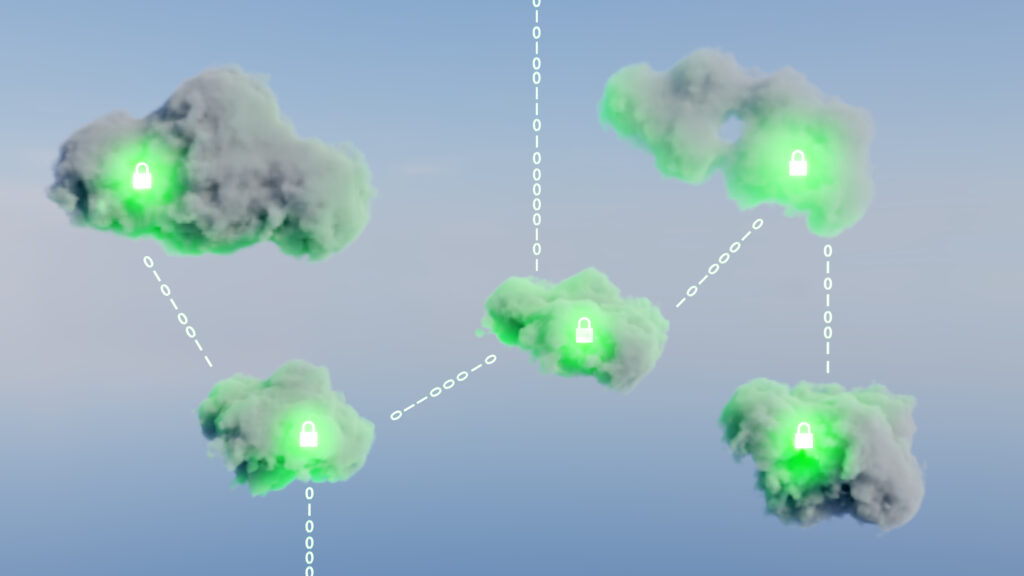SASE is everywhere in security conversations right now. It’s flexible, cloud-delivered, and designed to support remote work. For many teams, it promises a simpler way to manage access and enforce policy across users, locations, and apps.
But any time you add another security technology, you add complexity. Most large organizations are already operating in hybrid environments—some infrastructure on-prem, some in the cloud, each with its own policies and enforcement tools.
That fragmentation is already showing up in the data. In the 2025 Secure Network Access Report from Hughes Network Systems and Cybersecurity Insiders, 23% of cybersecurity professionals cited the complexity of managing access policies across platforms as one of their top challenges.
That number points to a deeper challenge: understanding how access is granted across the full network path. Users connect through SASE from anywhere on the internet, but the resources they need often sit deep in data centers or cloud environments. Those environments typically require significant rework to align with SASE.
Understanding how traffic moves from entry point to destination, including every control that permits or blocks access, is essential for maintaining compliance.
TLDR
SASE simplifies access, but without aligned policy across tools, it introduces compliance gaps. This blog shows specific areas where policy tends to drift and what to do about it. Read the full guide for a deeper breakdown.
When Policy Drifts, Compliance Suffers
Enterprise environments are large and complex, and continue to grow over time. SASE is introduced into networks that already include firewalls, cloud-native controls, remote access tools, and other platforms. The result is a patchwork of enforcement points, each managed by different teams using different tools.
This fragmented setup creates a real challenge for aligning policy across systems. Configuring controls in one platform does not ensure they are enforced consistently in others. Firewalls, cloud security groups, and SASE tools all follow different models, and keeping them in sync requires deliberate coordination.
Visibility often stops at the SASE gateway. Users may be authenticated and routed properly at the edge, but traffic still moves through other systems—including internal firewalls, segmentation rules, and cloud-native policies—before reaching its destination. Without a full view of this path, it becomes difficult to confirm that enforcement matches intent or that policy decisions hold up under audit.
Misalignment leads to drift. A user is removed from one system, but a legacy rule somewhere else still allows access. A segmentation policy is applied in the cloud, but never replicated on-prem. Each control enforces its own logic without reference to the others. The result is inconsistent enforcement that weakens audit readiness and increases risk.
Where Policy Breaks Down in Practice
The symptoms show up long before the audit. A change request sits in a ticket queue while a related rule is added somewhere else. A new application gets deployed without segmentation because the network team was not looped in. A regulatory update arrives, and each team interprets it differently. Risk is assessed manually. Logs are scattered. Access reviews turn into disconnected, spreadsheet-based exercises. Each small breakdown increases operational friction.
These issues reflect how systems are structured. Every tool has its own logic. Every team follows its own process. As the number of control points grows, so does the likelihood of policy gaps.
How to Stay Aligned Without Burning Time
A knee-jerk reaction is to overhaul your tools or try to redesign your architecture. Instead, teams need a more deliberate approach to how policy is defined, enforced, and validated. Especially when responsibility is split across network, cloud, and security.
The strongest organizations treat policy as a living system. You cannot wait for an audit to uncover inconsistencies. Instead, focus on making policy alignment part of the daily workflow.
Here’s what that looks like in practice:
- Build a shared policy model. Firewalls, cloud platforms, and SASE tools all operate differently. A shared model brings consistency to how policy is defined and interpreted so it can be applied across systems without retranslation. It becomes the baseline teams work from, not a rulebook they reference later.
- Automate change with context. Every policy update should pass through a workflow that includes approvals, risk checks, and cleanup steps. That workflow should also capture intent and scope. Automation here is not just about speed. It is about making every change traceable and auditable without manual follow-up.
- Monitor usage and violations continuously. Drift happens when rules stick around long after they are needed or when no one knows what they actually allow. Track which policies are used, which are violated, and which are outdated. This turns policy cleanup into a regular process, not a reactive scramble.
- Give teams a single source of truth. When cloud, network, and security teams are working from different views of enforcement, misalignment is inevitable. A shared system that tracks proposed changes, validates them against policy, and shows where enforcement occurs brings everyone back to the same page.
- Capture compliance by default. If policy decisions are made across tools and teams, evidence needs to follow those decisions automatically. That includes who approved the change, how risk was evaluated, and how access was removed later. When this context is embedded in the workflow, audits become confirmation, not reconstruction.
Final Thought
If your SASE environment connects to data centers or cloud systems, full-path visibility is essential. Without it, enforcement becomes fragmented and compliance becomes harder to maintain. The work starts upstream with shared models, connected workflows, and teams operating from the same baseline.
Tufin supports SASE as part of our broader platform strategy, helping teams gain visibility and control across cloud and on-prem environments. Our latest update includes enhanced support for Zscaler, making it easier to resolve access issues, analyze connectivity, and maintain audit readiness.
Ready to Learn More
Get a Demo





